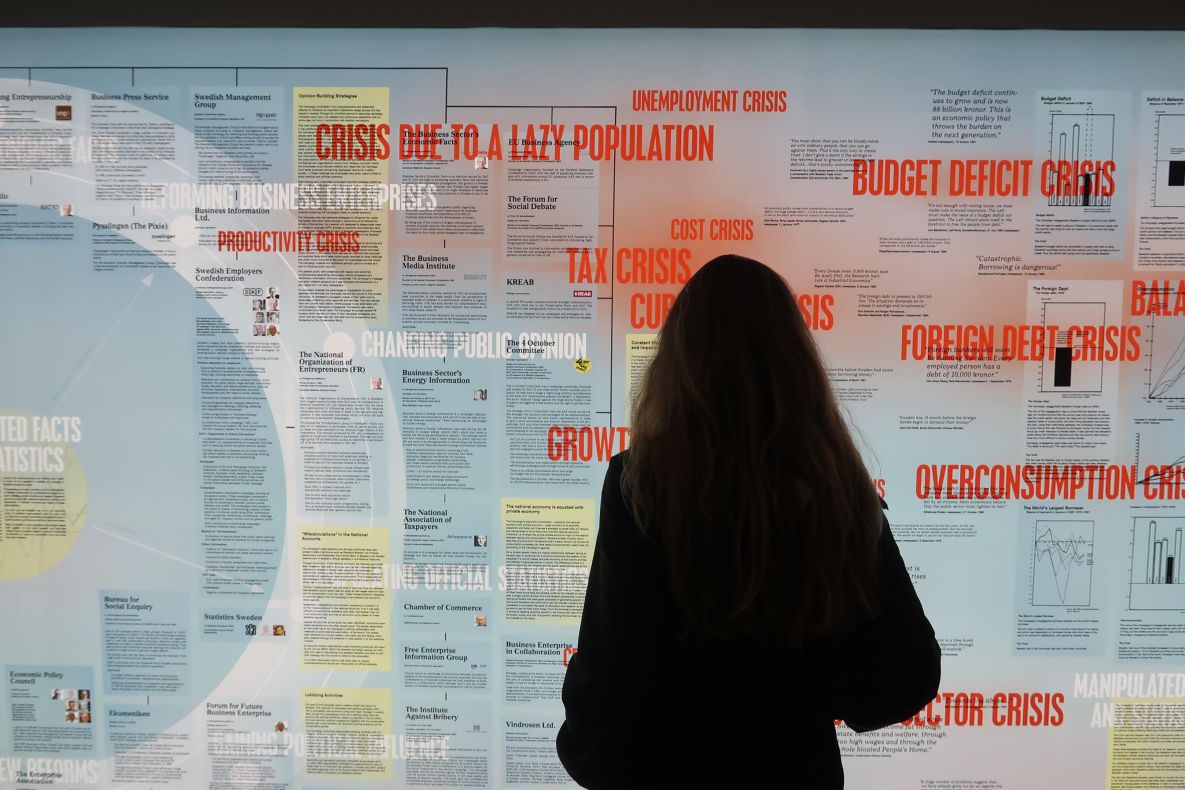Nathalie Gabrielsson's The Campaign #1 in C-print's Best Exhibition List of 2020

In great company, Nathalie Gabrielsson’s The Campagin was featured in C-print’s Best Exhibitions of 2020 List.Not only that, but listed #1! Thanks C-print! The full list can be found here
Read what C-print had to say in their round up of the best exhibitions of the year:
“Thought-provoking and very timely in days of distorted facts and” fake news”, Konstfack graduate Nathalie Gabrielsson’s solo exhibition, by way of “creating an institution within an institution”, brought forth a historical exposé of Swedish policymaking, invisible power structures and economic theories and models with the aid of the Kybernein Institute, a research-based platform of sorts founded by the artist while still at art school. Executed with tonal and visual perfection, bringing the likes of senior peers Goldin + Senneby to mind, the exhibition is quite the accomplishment not just for a recent graduate but for any artist. That needs to be stressed. Nathalie Gabrielsson makes for one of this year’s significant new discoveries – hats off to Index for bringing forward a great artist who might otherwise have been criminally overlooked – and cheers already to what great feats Nathlie Gabrielsson might have in store and up her sleeve next.
To put into greater perspective, Index through and through did great exhibition programming this year with nothing really missing much of a beat. If Nathalie Gabrielsson’s exhibition was the most impressive exhibition of the year, placing it at the top of this year’s list, honorable mentions would have to be the solos of Ramesch Daha and Ulrika Sparre. At the core of the Ramesch Daha’s exhibition (I Am Healthy, I Cannot Write This Letter Myself) was Sigmund Klein; Ramesch Daha’s grandfather whose correspondence while in imprisonment in Nazi camps (Dachau, Buchenwald and Ravensbrück) served as the main point of departure for a four-year long archival and painterly process. That is nothing less than first-level history writing per way of art. Ulrika Sparre’s exhibition Ear to the Ground consisted of sculptural works and a video installation as a centerpiece. The latter sees a journey off the beaten desert track, as we follow the artist while she with contact microphones picks up on the sounds of stones, literally putting our ear to the ground. The close-ups of her coming in contact with the stones; testaments to time, the past and history, lends a tactile dimension to the work. As a viewer you are ushered into a meditative state – a place, which in the midst of a pandemic, functions effectively as a well-needed spiritual refuge.”